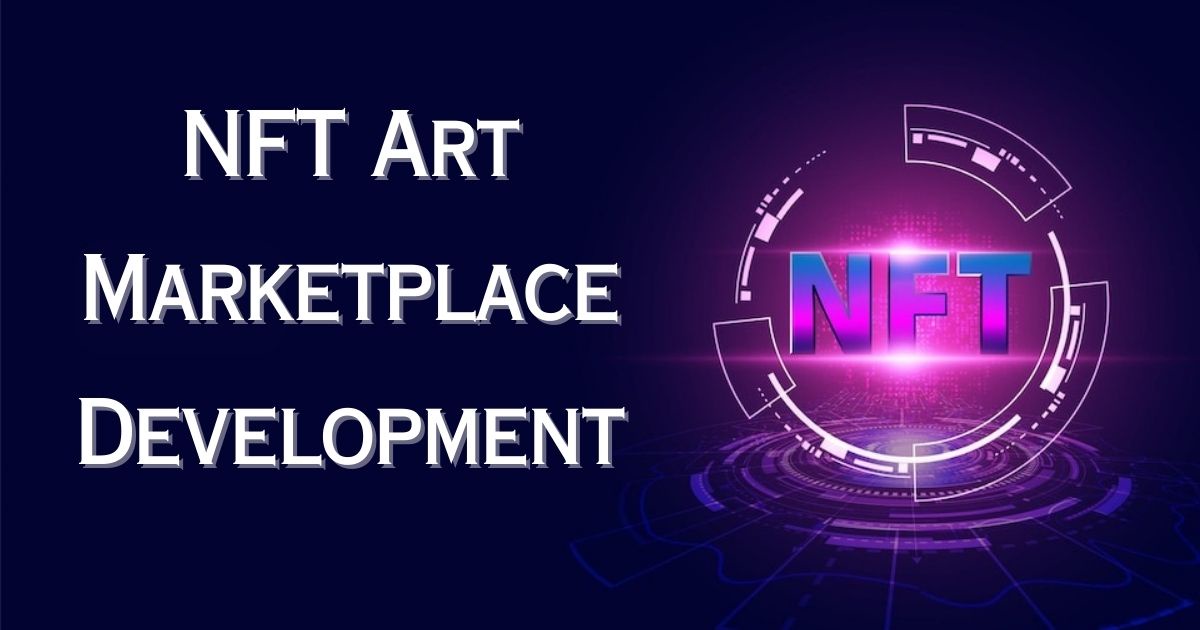In recent years, the world has witnessed a revolutionary transformation in the art industry through the rise of NFTs (Non-Fungible Tokens). NFTs are unique digital assets that represent ownership of a specific item, such as digital art, music, videos, or virtual real estate, on the blockchain. This technology has empowered artists by providing them with new opportunities to monetize their digital creations and engage directly with their audience. In this article, we will delve into NFT Art Marketplace Development and the impact they have had on the art community.
➡️ The Emergence of NFT Art Marketplaces
NFT art marketplaces have played a pivotal role in the widespread adoption of NFTs among artists and collectors alike. These platforms offer a seamless and secure environment for artists to tokenize their artworks as NFTs and list them for sale, while collectors can browse, bid on, and purchase these unique digital assets. The emergence of popular NFT marketplaces like OpenSea, Rarible, and Foundation has been instrumental in fostering a thriving ecosystem for digital art enthusiasts.
➡️ Benefits and Challenges for Artists in NFT Art Marketplaces
NFT art marketplaces offer a myriad of benefits to artists, especially those exploring the digital medium. One of the primary advantages is the elimination of intermediaries, such as galleries and auction houses, enabling artists to retain a more significant portion of their earnings. Additionally, the transparency of blockchain technology ensures that artists receive royalties whenever their NFTs are resold, creating a sustainable income stream. Moreover, NFTs enable artists to engage directly with their audience, fostering a deeper connection and appreciation for their work.
However, challenges persist in the NFT art marketplace landscape. The barrier to entry can be daunting for some artists, as it requires a basic understanding of blockchain technology and the associated costs of minting NFTs. Moreover, environmental concerns related to the energy-intensive blockchain networks used in NFT transactions have sparked debates on the sustainability of the NFT art market.
➡️ Exploring the Technical Aspect of NFTs
At the core of NFT art marketplaces lies the technical infrastructure that enables the creation, buying, and selling of NFTs. The process typically involves "minting," where a unique token is created to represent the digital art piece. Ethereum, the most widely used blockchain for NFTs, utilizes smart contracts to facilitate the creation and exchange of these tokens. However, the rapidly evolving blockchain landscape has led to the emergence of alternative networks with reduced environmental impact and lower transaction costs.
➡️ NFT Art Marketplaces and the Art Community
The integration of NFT art marketplaces has sparked debates within the traditional art community. While some view NFTs as a disruptive force that democratizes the art world and empowers artists, others criticize the perceived speculation and hype surrounding certain digital artworks. Nevertheless, collaborations between traditional and digital artists have emerged, demonstrating the potential for bridging the gap between these art forms.
➡️ NFTs Beyond Art: The Future of Tokenization
The success of NFTs in the art world has paved the way for exploring tokenization in other industries. Concepts such as virtual real estate, tokenized collectibles, and digital fashion have gained momentum, showcasing the versatility of blockchain technology beyond art. As NFT standards evolve and scalability improves, the potential for NFTs to disrupt various sectors remains boundless.
➡️ NFT Art Marketplaces: Looking Ahead
The future of NFT art marketplaces holds immense promise. As blockchain technology advances and becomes more sustainable, the barriers to entry will likely decrease, inviting more artists to embrace NFTs. Additionally, the integration of augmented reality (AR) and virtual reality (VR) into NFT art platforms could revolutionize the way audiences experience digital art.
➡️ Conclusion
In conclusion, NFT Art Marketplace Development has ushered in a new era of creativity and empowerment for artists. Through the blockchain-powered tokenization of digital art, artists can forge direct connections with their audience and monetize their creations in ways previously unimagined. However, the NFT art marketplace landscape also faces challenges that must be addressed to ensure long-term sustainability and inclusivity. With ongoing innovation and collaboration, NFT art marketplaces will continue to shape the art world, creating a dynamic and decentralized ecosystem for artists and art enthusiasts worldwide.


No comments yet